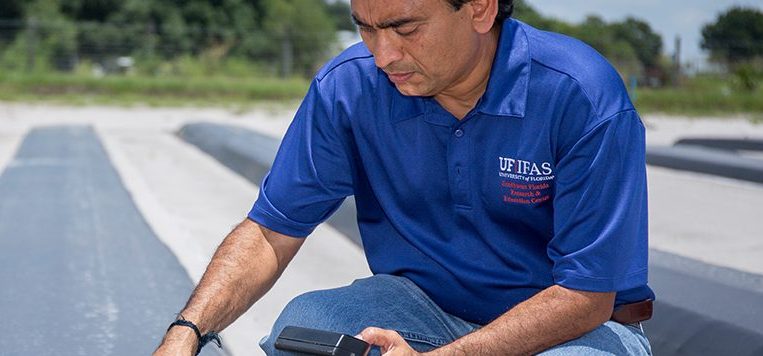By Ernie Neff

The benefits of compact bed plasticulture for vegetable growing were discussed at a grower meeting Feb. 4 in Immokalee. Some of the information was presented by Sanjay Shukla, an agricultural engineer with the University of Florida Institute of Food and Agricultural Sciences (UF/IFAS) Southwest Florida Research and Education Center.
Compact beds, at 16 to 24 inches wide and 10 to 12 inches tall, are narrower and taller than conventional beds, which are typically 32 to 36 inches wide and 4 to 8 inches tall. Shukla said some top vegetable producers from Florida to Virginia have changed bed geometry to adopt the compact beds as a result of UF/IFAS research showing the compact beds are beneficial.
“What we have found is a net reduction in production costs,” from using the compact beds, Shukla said. Reductions can come from the use of less irrigation, plastic, fertilizer, pesticides and drip tape. Shukla said growers have reported seeing savings up to $500 per acre.
Additional savings might come from labor benefits, reduced flooding and hurricane damage, and lower disease and pest incidence, all of which Shukla said are possible as a result of using compact beds.
Labor benefits might come as a result of the taller beds, Shukla said. Researchers think the taller beds might result in less bending and stretching by workers. Workers might be less tired, able to harvest more and increase their labor efficiency. “As you know, labor is a big part of … the production cost,” Shukla said.
Researchers think the compact beds might lead to less flooding in vegetable fields, in part because the smaller beds contain less plastic, and less plastic means less water runoff. Shukla said less flooding would result in less nutrient leaching and less incidence of disease, including phytophthora.
Shukla cited a “surprising discovery” of another possible benefit from compact beds during 2017’s Hurricane Irma. He said in side-by-side vegetable plots, conventional beds suffered extensive damage while compact beds had no damage. Researchers are trying to determine why that happened and if they can design beds that will withstand hurricane winds. The current hypothesis is that less plastic surface area leads to less friction and less lift forces, Shukla said.









